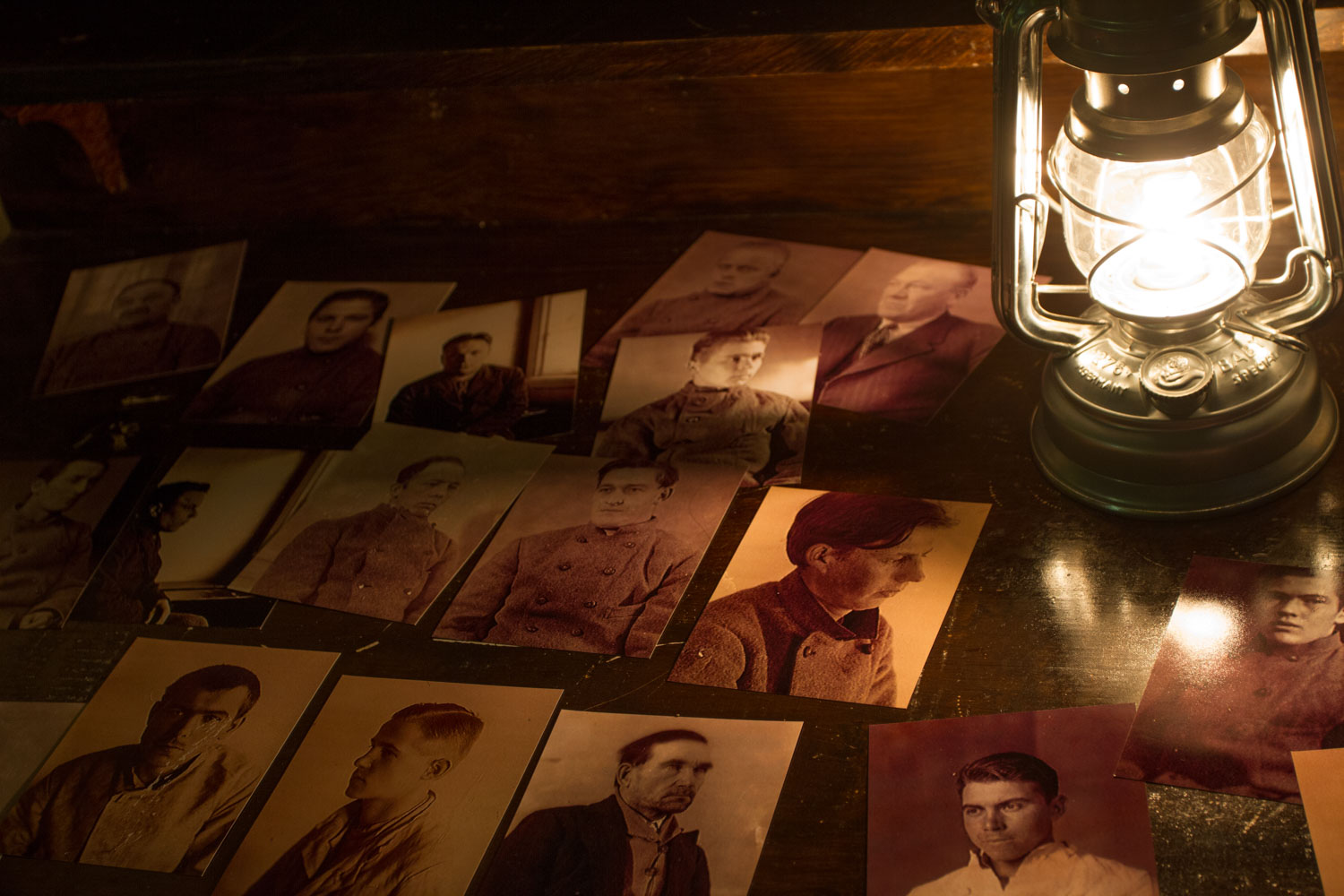Den Vita Duvans Lament by Maria W Horn is a song cycle that combines light and electronic tones to create an audiovisual installation, specifically composed for the cell prison Den Vita Duvan in Luleå. The separate voices of the inmates, represented by speakers placed in the different cells of the prison, together form a melodically weaving and slowly progressing harmonics.


About Den Vita Duvans Lament
Electroacoustic composition for eight voices, synthesis, light
Den Vita Duvans Lament by Maria W Horn is a song cycle that combines light and electronic tones to create an audiovisual installation, specifically composed for the cell prison Den Vita Duvan in Luleå. The separate voices of the inmates, represented by speakers placed in the different cells of the prison, together form a melodically weaving and slowly progressing harmonics.
Den Vita Duvans Lament combines light and electronic sounds with a recorded vocal cycle, specifically composed for the cell prison Vita Duvan [The White Dove] in Luleå. The cycle is composed based on the imagined individual voices of the inmates, represented by loudspeakers placed in the various cells of the prison. Together they form a slowly evolving melodic weave, the voices striving to express a common experience. Each voice strives for this commonality, but is hindered by the forced isolation of the prison architecture. The white and red lights are reminiscent of the cyclical shift between daylight and darkness.
How is a consciousness affected by the sensory deprivation that an isolation cell entails? In her work Horn has tried to imagine the experience of the individual prisoner, whose first three years were often spent in total isolation, during which all contact with other prisoners was strictly forbidden. The silence and uncertainty, the scarce space whose only indication of the passage of time is the cycles of daylight. Prisoner biographies and interrogation records testify to how the inadequate nutrition, thin air and total absence of stimulation forced the prisoners to develop strategies to stimulate the brain to avoid suffering from psychosis.
Vita Duvan in Luleå is the only Swedish prison built with inspiration from the British philosopher Jeremy Bentham’s Panopticon. The circular prison structure with its central monitoring site was meant to create a sense of invisible omniscience whose main function was to make the inmates aware that they could be constantly monitored, without having any way of checking if this was the case. Through the extensive reform of the Western penal system from the 18th century onwards, the former corporal punishments of torture and death, as well as punishments of shame and public humiliation were replaced by new technologies for social control through spatial isolation and surveillance. The interior of the cell prison was seen as an efficient and silent machinery, through which the isolation – a nightmare for the soul [1] – would gradually bring about an inner change of the prisoner.
Horn is interested in the manipulation of time and space through sonic extremes – oscillating between minimalist structures and piercing power electronics utilizing both digital and analog synthesis as well as acoustic instruments and audiovisual components. Her work examines aspects of human perception – how audiovisuality and overload/loss of perceptual stimuli can conspire to transcend everyday life and invoke alternate mental states.
1. This wording is borrowed from Roddy Nilssons En välbyggd maskin, en mardröm för själen; Det svenska fängelsesystemet under 1800-talet
Om Maria W Horn
Maria W Horn (b. 1989, Härnösand) is a composer based in Stockholm.
Find the artwork
Luleå
